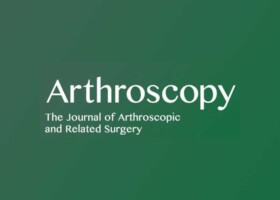
Authors:
Eoghan T. Hurley, MD, PHD, Zachary S. Aman, MD, Tom R. Doyle, MB, MCh, Jay M. Levin, MD, MBA, Laith M. Jazrawi, MD, Grant E. Garrigues, MD, Surena Namdari, MD, Jason E. Hsu, MD, Christopher S. Klifto, MD, Oke A. Anakwenze, MD, MBA, Jonathan F. Dickens, MD,
Abstract:
PURPOSE
The purpose of this study was to establish consensus statements on the diagnosis, non-operative management, and labral repair for posterior shoulder instability.
METHODS
A consensus process on the treatment of posterior shoulder instability was conducted, with 71 shoulder/sports surgeons from 12 countries participating based on their level of expertise in the field. Experts were assigned to one of 6 working groups defined by specific subtopics within posterior shoulder instability. Consensus was defined as achieving 80-89% agreement, whereas strong consensus was defined as 90-99% agreement, and unanimous consensus was indicated by 100% agreement with a proposed statement.
RESULTS
Unanimous agreement was reached on the indications for non-operative management and labral repair which include whether patients had primary or recurrent instability, with symptoms/functional limitations, and whether there was other underlying pathology, or patient's preference to avoid or delay surgery. Additionally, there was unanimous agreement that recurrence rates can be diminished by attention to detail, appropriate indication and assessment of risk factors, recognition of abnormalities in glenohumeral morphology, careful capsulolabral debridement and reattachment, small anchors with inferior placement and multiple fixation points that create a bumper with the labrum, treatment of concomitant pathologies, and a well-defined rehabilitation protocol with strict postoperative immobilization.
CONCLUSION
The study group achieved strong or unanimous consensus on 63% of statements related to the diagnosis, nonoperative treatment, and labrum repair for posterior shoulder instability. The statements that achieved unanimous consensus were the relative indications for non-operative management, and the relative indications for labral repair, as well as the steps to minimize complications for labral repair. There was no consensus on whether an arthrogram is needed when performing advanced imaging, the role of corticosteroids/orthobiologics in non-operative management, whether a poster-inferior portal is required.
For the complete study: Posterior Shoulder Instability Part I – Diagnosis, Non-Operative Management, and Labral Repair for Posterior Shoulder Instability – An International Expert Delphi Consensus Statement
